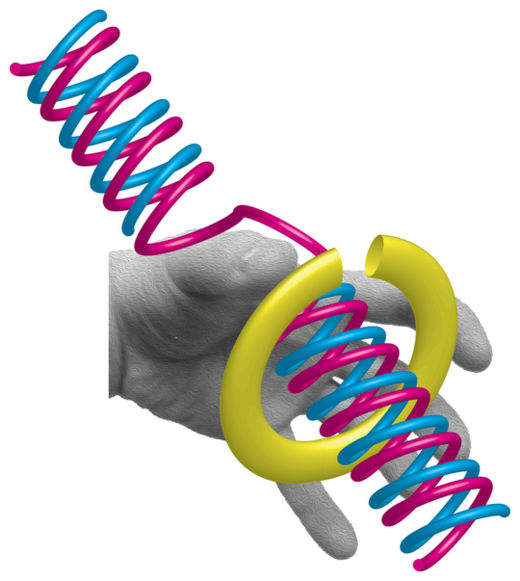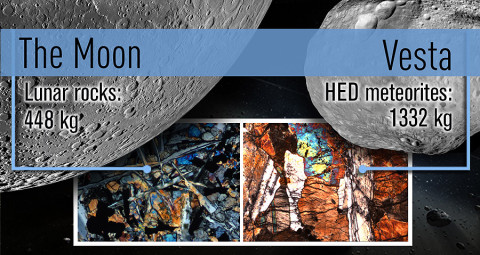
© Benkovic lab, Penn State UniversityStephen J. Benkovic, Mark Hedglin, and other members of Professor Benkovic's research team have studied the importance of "clamp loader" enzymes and their activities during DNA replication. In this image, the clamp loader is represented, for illustrative purposes, by a hand, which is loading the sliding clamp ring onto DNA.
University Park, Pennsylvania -- For the first time, an elusive step in the process of human DNA replication has been demystified by scientists at Penn State. According to senior author Stephen J. Benkovic, an Evan Pugh Professor of Chemistry and Holder of the Eberly Family Chair in Chemistry at Penn State, the scientists "discovered how a key step in human DNA replication is performed." The results of the research was published today (April 2) in the journal
eLife.
Part of the DNA replication process -- in humans and in other life forms -- involves loading of molecular structures called sliding clamps onto DNA. This crucial step in DNA replication had remained somewhat mysterious and had not been well studied in human DNA replication. Mark Hedglin, a post-doctoral researcher in Penn State's Department of Chemistry and a member of Benkovic's team, explained that the sliding clamp is a ring-shaped protein that acts to encircle the DNA strand, latching around it like a watch band.
The sliding clamp then serves to anchor special enzymes called polymerases to the DNA, ensuring efficient copying of the genetic material. "Without a sliding clamp, polymerases can copy very few bases -- the molecular 'letters' that make up the code of DNA -- at a time. But the clamp helps the polymerase to stay in place, allowing it to copy thousands of bases before being removed from the strand of DNA," Hedglin said.
Hedglin explained that, due to the closed circular structure of sliding clamps, another necessary step in DNA replication is the presence of a "clamp loader," which acts to latch and unlatch the sliding clamps at key stages during the process. "The big unknown has always been how the sliding clamp and the clamp loader interact and the timing of latching and unlatching of the clamp from the DNA," said Hedglin.
"We know that polymerases and clamp loaders can't bind the sliding clamp at the same time, so the hypothesis was that clamp loaders latched sliding clamps onto DNA, then left for some time during DNA replication, returning only to unlatch the clamps after the polymerase left so they could be recycled for further use."



